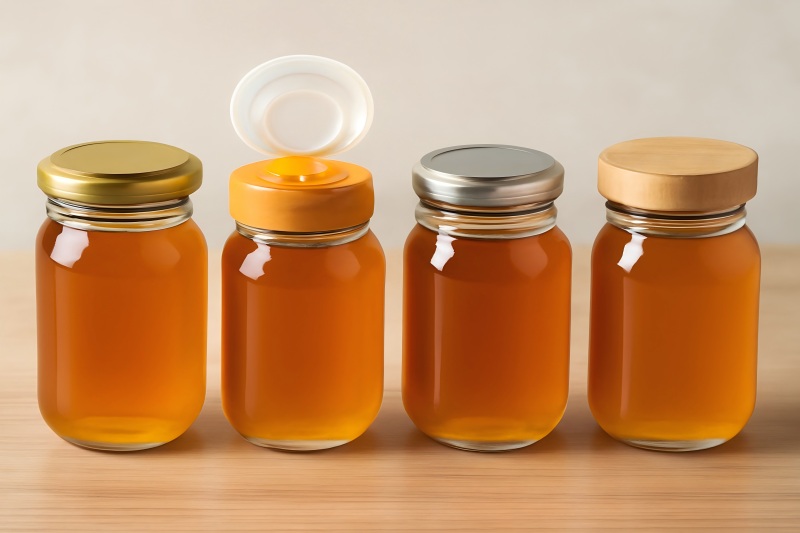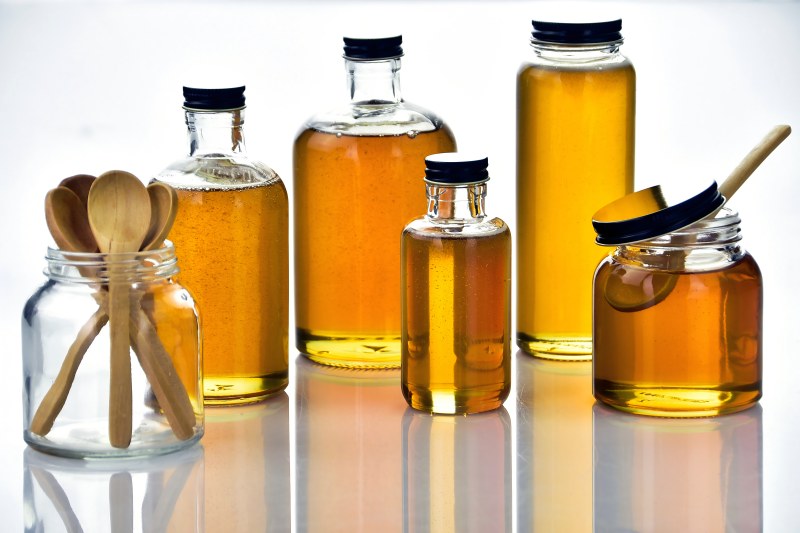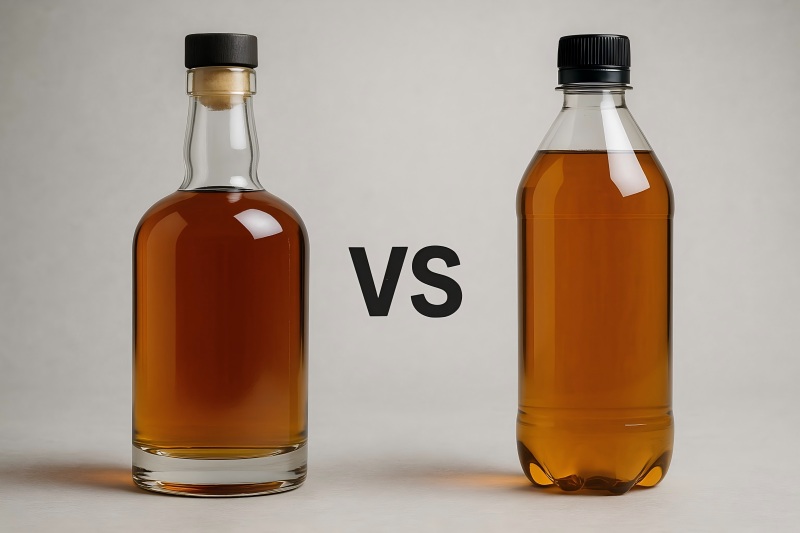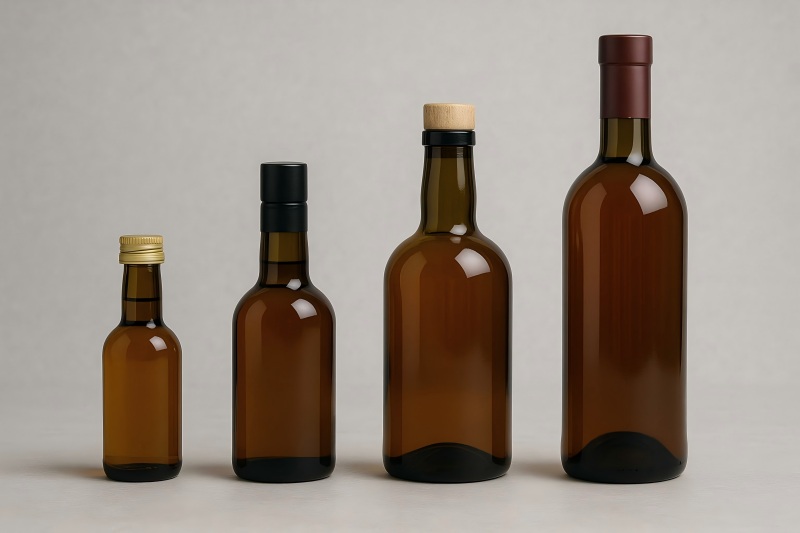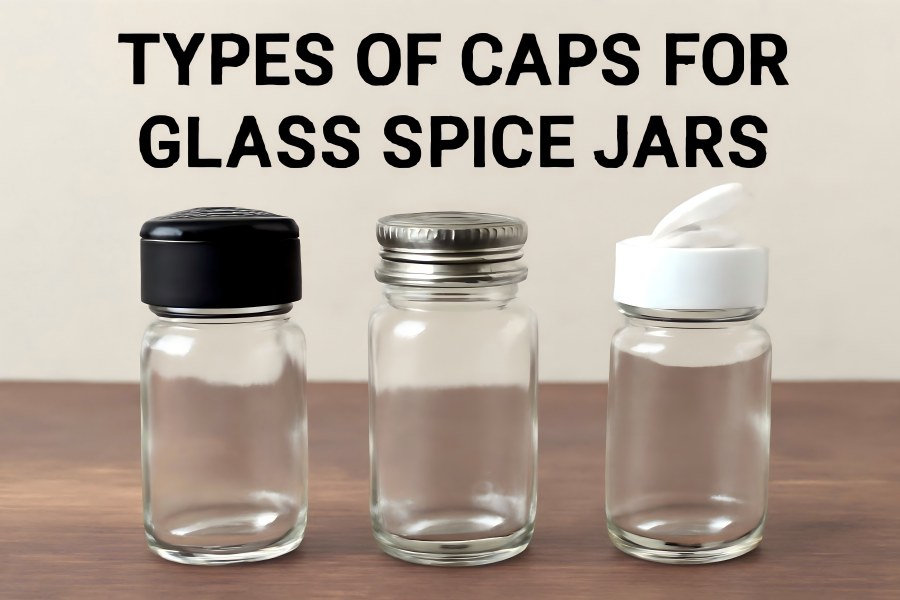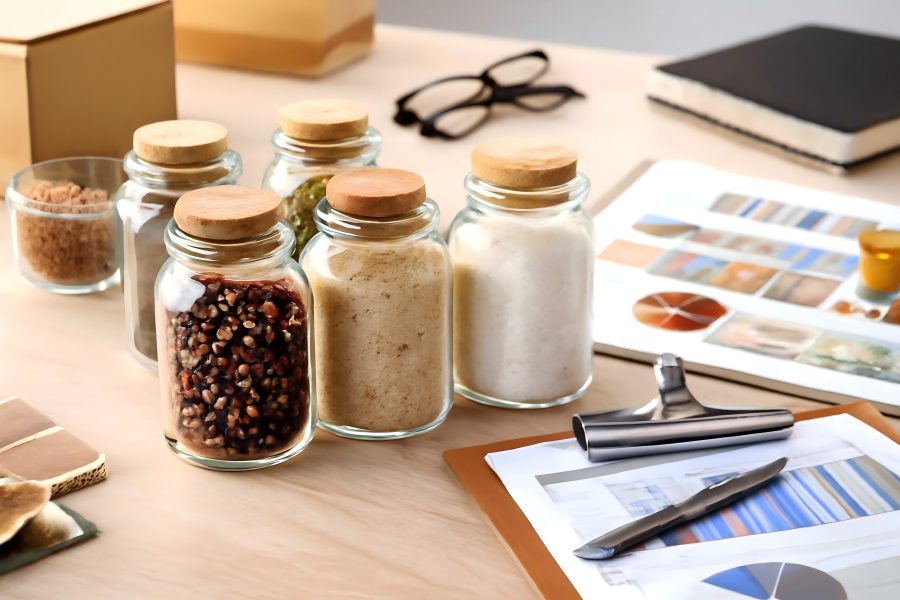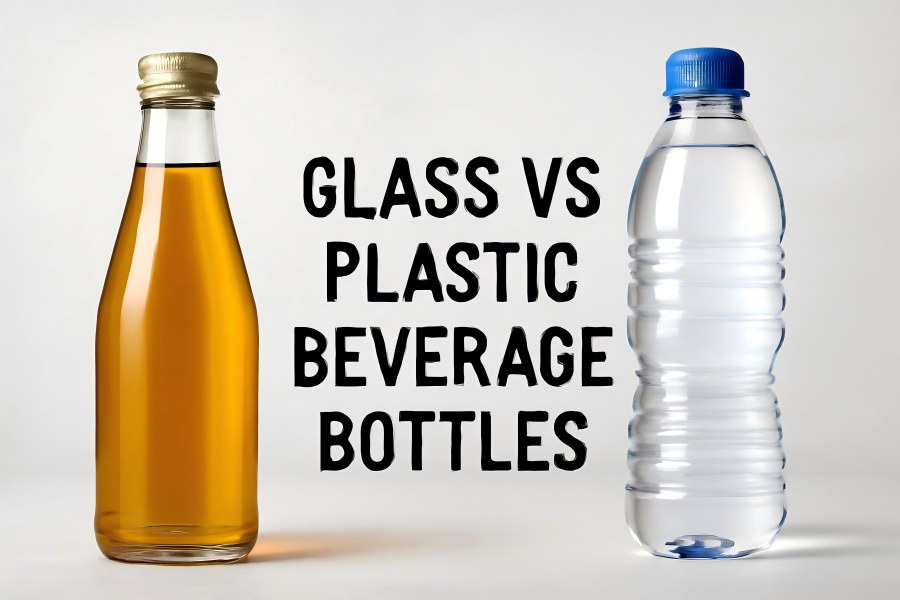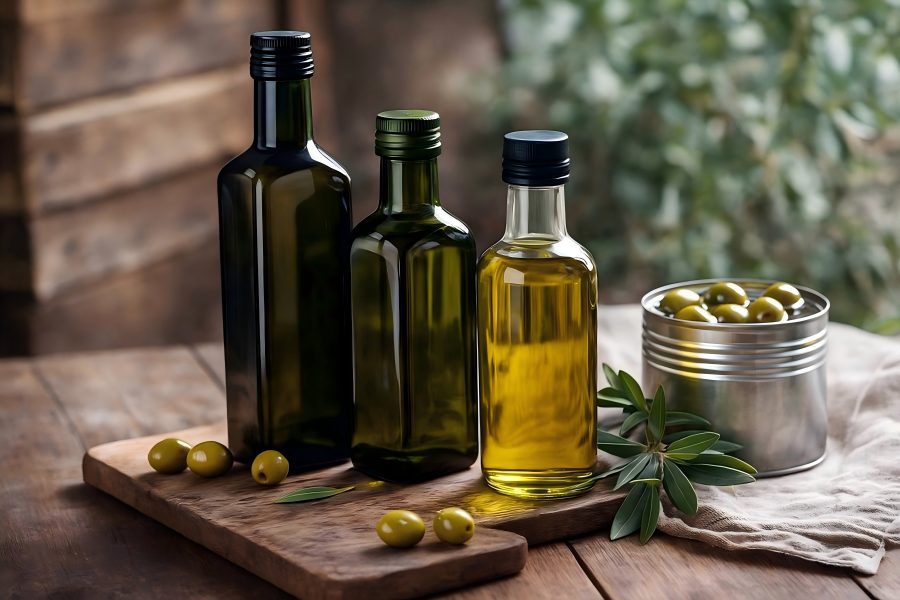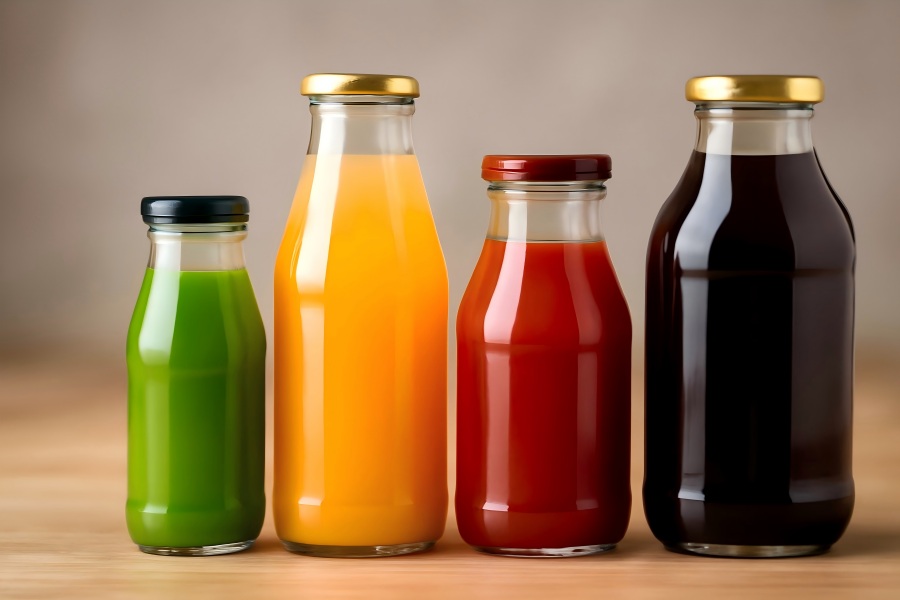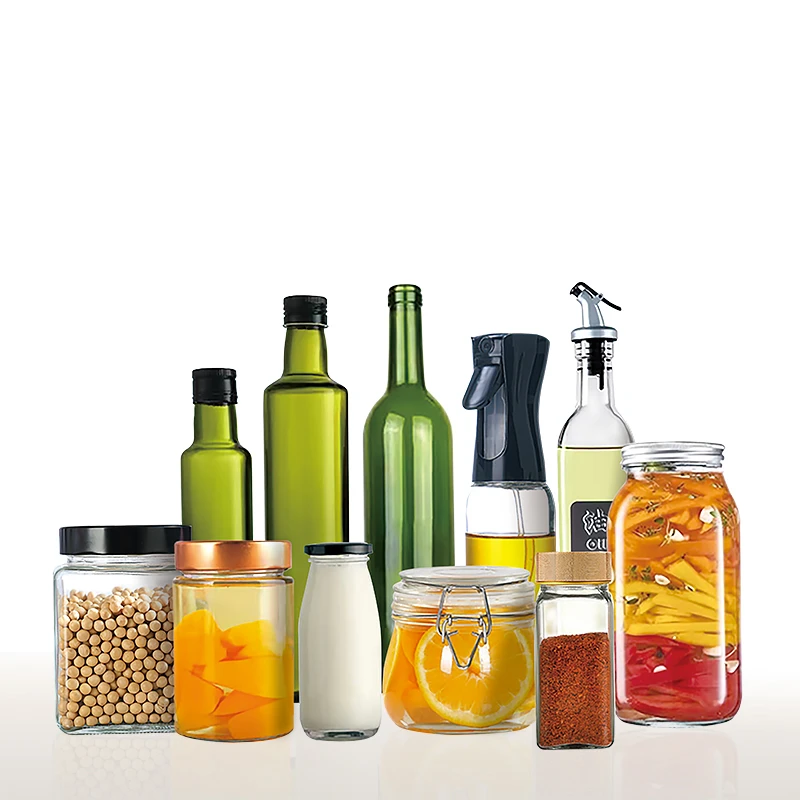Guide to Types of Glass Bottles: A Comprehensive Reference for Manufacturers and Brands
Glass bottles have been used for centuries thanks to their durability, elegance, and recyclability. They’re widely used across industries like beverages and pharmaceuticals. Choosing the right glass bottle affects product shelf life, branding, user experience, compliance, logistics, and sustainability.
This guide offers a clear overview of glass bottle types by material, color, shape, size, use, region, and function—highlighting how each factor impacts performance.
Glass Bottle Materials
Glass bottle materials vary in composition, durability, cost, and application. The three most commonly used materials—soda-lime glass, borosilicate glass, and lead glass (crystal)—offer distinct advantages and limitations across industries.
Soda-Lime Glass
For all-purpose bottles, soda-lime glass is the most popular variety. Silica, soda ash, and limestone make up this inexpensive, recyclable, and easily moldable material that is perfect for mass-market packaging.
Applications:
Used for water bottles, food jars, cosmetics, and beverages like soda and beer. Available in clear, green, or amber to match product needs or protect from UV light exposure.
| Pros | Cons |
| Economical and readily available | Susceptible to breakage from sudden temperature changes |
| Highly recyclable and eco-friendly | Lower resistance to thermal shock than specialty glass types |
| Easy to mold into various shapes and sizes | Not suitable for high-temperature applications |
| Offered in clear or tinted colors | Can leach alkali in harsh chemical conditions |
Borosilicate Glass
Borosilicate glass is engineered with silica and boron trioxide, providing superior thermal and chemical stability. It is ideal for premium bottles that must withstand temperature fluctuations or hold reactive substances safely.
Applications:
Common in laboratory bottles, essential oil packaging, and luxury beverage containers that require durability, chemical resistance, and heat resilience for safety and performance.
| Pros | Cons |
| Excellent resistance to heat and thermal shock | Higher cost than soda-lime glass |
| Chemically inert and ideal for sensitive contents | Heavier and more energy-intensive to produce |
| Suitable for both hot and cold environments | Limited flexibility in forming complex shapes |
| Durable and long-lasting for premium applications | Less color variety and visual customization options |
Lead Glass (Crystal)
Lead glass, or crystal glass, contains lead oxide that enhances clarity and brilliance. It is valued for its aesthetic appeal and weight, making it a choice material for decorative and premium product packaging.
Applications:
Used in luxury decanters, high-end liquor bottles, and collectible items. Often chosen for visual appeal rather than food safety due to concerns about lead leaching.
| Pros | Cons |
| Offers unmatched brilliance, shine, and decorative value | Contains lead, posing health risks for food or beverage use |
| Heavier weight adds to the premium perception | More fragile and susceptible to cracking under stress |
| Enhances brand image in luxury segments | Costlier than soda-lime and borosilicate glass |
| Ideal for ornamental and gift packaging | Not always suitable for repeated or long-term storage of consumables |
Glass Bottle Shapes and Designs
Bottle shape plays a vital role in product functionality, shelf appeal, branding impact, and user experience. From cylindrical to custom-molded designs, each shape carries specific advantages that influence usage scenarios and consumer perception.
Cylindrical
- The most universal and adaptable bottle shape is used across multiple product categories.
- Symmetrical form simplifies labeling, shrink wrapping, and automated production lines.
- Excellent stackability and space efficiency for transport and retail display.
- Commonly found in beverages, edible oils, sauces, cleaning products, and cosmetic lines.
Square
- Offers a contemporary and stable look with strong, geometric lines.
- Flat sides provide full-surface label application and efficient packaging layout.
- Improved storage density and product handling during transport.
- Often used for premium spirits, specialty oils, and gourmet condiments to convey high-end appeal.
Oval
- Sleek and elongated body that provides a refined, ergonomic grip.
- Ideal balance between visual sophistication and stability on shelves.
- Reduced label space compared to square bottles, but visually striking in display.
- Frequently selected for lotions, body care, facial cleansers, and cosmetic products.
Round-Shouldered
- Features smooth shoulders that gradually transition into the neck.
- Enhances pouring control while providing a soft, approachable silhouette.
- Visually appealing for both everyday use and luxury applications.
- Widely used in packaging olive oils, shampoos, liquid soaps, and beauty treatments.
Longneck
- Defined by a tall, slender neck with a wider, stable base.
- Supports easy pouring and efficient carbonation retention in sealed beverages.
- Recognized globally as a standard for beer and some soft drink packaging.
- Also used in ciders, kombucha, sparkling waters, and specialty soda formats.
Flask-Shaped
- Compact, curved profile designed for convenience and portability.
- Easily fits in pockets, bags, or gift boxes with minimal storage needs.
- Typically smaller in volume, prioritizing design over capacity.
- Common in mini whiskey bottles, brandy samples, and on-the-go liquor packaging.
Boston Round
- A thick base for extra weight and stability, and a circular body with rounded shoulders.
- Strong structural integrity, compatible with droppers, pumps, and screw caps.
- Frequently used in regulated industries for accurate dispensing and safe storage.
- Popular in pharmaceuticals, essential oils, laboratory reagents, and concentrated serums.
Custom Molding
- Offers complete flexibility in shape, contour, embossing, and brand integration.
- Higher initial investment for mold production, justified by long-term branding benefits.
- Creates an instantly recognizable visual identity that stands out in competitive markets.
- Best suited for signature perfumes, luxury spirits, private-label packaging, and seasonal releases.
Glass Bottle Colors and Functions
Glass bottle color influences more than appearance; it also impacts UV protection, product stability, and regulatory compliance. Choosing the right color helps preserve quality and enhance brand perception.
| Color | Typical Use | UV Protection | Description |
| Clear (Flint) | Water, juice, cosmetics | Minimal | Offers full visibility of contents, enhancing shelf appeal; best for low-sensitivity products. |
| Amber | Beer, pharmaceuticals, herbal extracts | Excellent | Blocks up to 99% of harmful UV rays; ideal for light-sensitive liquids like beer or medication. |
| Green | Wine, olive oil, artisan beverages | Moderate | Offers a balance between visual uniqueness and decent UV shielding. |
| Cobalt Blue | Perfume, essential oils, luxury cosmetics | Fair | Provides a distinctive, premium look with limited UV resistance; popular in personal care. |
| Black | CBD oils, luxury perfumes, specialty liquids | High | Offers nearly complete UV protection while conveying exclusivity and sophistication. |
Tip:
When your product is sensitive to light exposure, such as beer, essential oils, or pharmaceuticals, amber or black glass is the best choice to maintain stability and shelf life.
Glass Bottle Sizes and Capacities
Depending on their intended use, filling specifications, and industry packaging norms, bottles are available in a range of sizes. Choosing the correct size ensures optimal storage, visual appeal, and compatibility with automated systems.
Beverage Industry
Glass bottles used in beverages must meet strict volume and shape standards to support bottling lines and consumer expectations.
| Size | Typical Use | Notes |
| 330 ml | Soft drinks, beer | Common for single-serving carbonated beverages and craft beer cans or bottles. Easily handled and chilled quickly. |
| 500 ml | Craft beer, cold brew | Offers a premium feel with more volume. Often seen in specialty brews or high-end cold beverages. |
| 750 ml | Wine and liquor | Industry standard for still and sparkling wines, as well as spirits. Suitable for table presentation. |
| 1 L and above | Sparkling water, large format wine | Often used for sharing portions or premium bottled waters. Bulk size also minimizes packaging waste per serving. |
Pharmaceutical and Lab
Pharmaceutical and laboratory bottles prioritize precision, sterility, and material compatibility.
| Size | Typical Use | Notes |
| 10 ml – 30 ml – 100 ml | Dropper bottles | Suitable for essential oils, tinctures, and medicines. Dropper caps allow for accurate dosage. |
| 500 ml – 1 L | Storage bottles | Used for storing chemical reagents, solvents, or buffer solutions. Often made from borosilicate or chemically resistant glass. |
Cosmetics
Glass bottles in the cosmetic industry emphasize aesthetics, dosage control, and compatibility with viscous contents.
| Size | Typical Use | Notes |
| 15 ml – 100 ml | Essential oil and serum bottles | Designed for small-batch, high-value formulations. Typically paired with droppers or pumps. |
| 250 ml – 500 ml | Lotion and body wash bottles | Ideal for shelf-ready beauty products. These sizes balance portability with sufficient product volume. |
Closure Types for Glass Bottles
The type of closure significantly impacts product integrity, shelf life, safety, and ease of use. Different applications require closures that ensure sealing performance, tamper evidence, and consumer-friendly design.
Crown Cap
- Commonly found on beer and soda bottles, the crown cap is a crimped metal lid that creates an airtight seal.
- It is ideal for carbonated beverages due to its pressure-retaining ability and tamper-evident design, ensuring both freshness and safety.
Screw Cap
- Widely used in water, juice, and even wine bottles, screw caps offer a tight seal while allowing easy resealing.
- They are popular for their convenience, consistent performance, and ability to protect against contamination or leakage after opening.
Cork
- Typically associated with traditional wine bottles, corks are natural, breathable closures that allow minimal oxygen exchange.
- This characteristic supports wine aging and enhances consumer perception of quality, craftsmanship, and premium appeal.
Dropper
- Droppers are used in small glass bottles designed for essential oils, tinctures, and serums.
- They enable precise dispensing and dosage control, particularly for cosmetic or pharmaceutical applications that require accuracy and hygiene.
Pump or Spray
- Used in cosmetics, lotions, perfumes, and pharmaceutical products, these closures improve hygienic application.
- They reduce contamination risks and offer user-friendly dosing through spray or pump mechanisms, especially for viscous or liquid products.
Twist-off Lug Cap
- Commonly seen in jars of jam, sauces, pickles, and preserved foods, lug caps create a vacuum seal.
- They are easy to open and reclose, ensuring product freshness while supporting extended shelf life and safe home storage.
Specialty Glass Bottles
Specialty glass bottles offer unique functions and aesthetics tailored to specific product needs, from UV protection to refillability and tamper resistance.
UV-Blocking Bottles
- Made of black or dark-colored glass to shield contents from harmful light exposure.
- Commonly used in skincare, CBD oils, and nutritional supplements.
- Helps extend product shelf life by preventing UV degradation.
Refillable Bottles
- Built from extra-thick glass to withstand repeated refilling and handling.
- Supports sustainable packaging and zero-waste initiatives.
- Preferred in eco-conscious brands and bulk refill stations.
Collector Bottles
- Often designed with intricate details like embossing or custom mold shapes.
- Limiting production in order to increase perceived value.
- Popular in luxury spirits, vintage drinks, and commemorative editions.
Tamper-Evident Bottles
- Include safety features like shrink bands, perforated caps, or breakable rings.
- Indicate visually when an unlawful opening has occurred.
- Commonly utilized across the food, beverage, and pharmaceutical sectors.
Self-Dispensing Bottles
- Feature flow-control mechanisms such as spouts, pumps, or dropper inserts.
- Prevent over-pouring and contamination.
- Ideal for oils, lab chemicals, or precision-dosed liquids.
Returnable vs. Non-returnable Bottles
Returnable and non-returnable glass bottles differ in cost, weight, logistics, and sustainability. Your product’s usage cycle and branding objectives will determine which type is best for you.
| Feature | Returnable Bottles | Non-returnable Bottles |
| Thickness | Thick glass for repeated use, durable and less prone to breakage. | Thin glass for single use, easier to produce and transport. |
| Cost | Higher upfront cost, but reused multiple times to offset expense. | Low production cost, ideal for mass-market disposable packaging. |
| Logistics | Requires reverse logistics for collection, cleaning, and refilling. | One-way logistics streamline distribution and lower handling costs. |
| Sustainability | Encourages reuse, significantly reduces packaging waste over time. | Recyclable but generates more waste if not properly sorted. |
| Applications | Beer, milk, and soda often use returnable systems. | Perfume, wine, and spirits prefer elegant non-returnable designs. |
Labeling and Decoration Options
Decoration styles impact consumer appeal and brand identity. Each method serves different cost, durability, and design purposes, from low-cost labels to luxury stamping and embossing.
Paper Labels
Cost-effective, easy to apply and remove, suitable for large-scale production across food, beverage, and personal care markets.
Screen Printing
Ink is printed directly onto the bottle’s surface. It is waterproof, durable, and ideal for reusable or premium glass containers.
Embossing/Debossing
Glass is molded to create raised (embossed) or recessed (debossed) patterns for tactile, elegant branding that doesn’t require additional labeling.
Foil Stamping
Metallic foil adds high-end shine and visual depth. Frequently found in alcohol, cosmetics, and limited-edition advertising bottles.
Shrink Sleeves
A heat-shrunk plastic sleeve wraps the full bottle. Allows vibrant 360° designs and acts as a tamper-evident seal.
Sustainability and Recycling of Glass Bottles
Glass ranks among the most environmentally sustainable materials used for packaging. It is endlessly recyclable, reusable, and adaptable for eco-conscious production and consumption models.
Environmental Benefits
Glass is recyclable indefinitely without deteriorating, saving energy and raw resources while lowering the amount of garbage that ends up in landfills.
Post-Consumer Recycled Content (PCR)
Bottles can contain up to 90% recycled glass, reducing energy use, carbon emissions, and environmental impact from raw material sourcing.
Lightweighting
Lightweight designs reduce glass per bottle and save fuel during shipping, cutting both production and distribution emissions significantly.
Tip: Clearly label recyclability and eco-benefits to appeal to environmentally minded consumers and meet sustainability targets.
Market Trends in Glass Bottle Usage
Emerging trends favor sustainability, clean design, and functionality. Brands now blend aesthetics with usability to meet modern lifestyle and environmental expectations.
Minimalist Aesthetics
Transparent bottles with clean lines, simple fonts, and subtle logos evoke purity and elegance, particularly in skincare, wellness, and premium beverages.
Premiumization
Heavy, thick-walled bottles communicate luxury and exclusivity. Used in perfume, spirits, and luxury personal care to enhance tactile and visual experience.
Functional Packaging
Pumps, rollers, and sprays are increasingly integrated into glass bottles for enhanced usability in skincare, pharmaceuticals, and personal care.
Sustainable Branding
Brands prioritize packaging with refillable options, recycled content, and biodegradable accessories to meet global demand for eco-friendly solutions.



